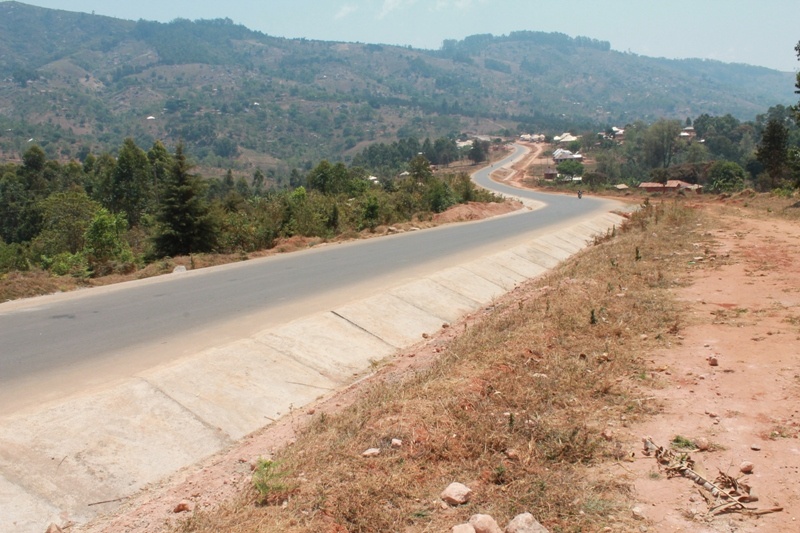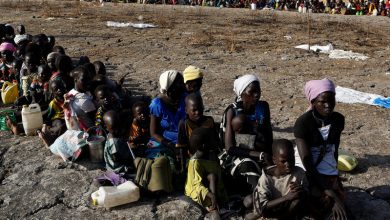Four years of unlocking Tanzania through roads

DODOMA: “ROADS are the arteries through which the economy pulses,” says Claudia Berg, a Development Research Group worker at the World Bank.
Berg holds this view due to the vital role roads play in driving a country’s economy.
According to the researcher, roads link producers to markets, workers to jobs, students to schools and the sick to hospitals.
Given their importance, since 2002, the World Bank has invested heavily in constructing or rehabilitating more than 260,000 km of roads.
The sector has become more crucial compared to others because it provides access to essential social services such as education and healthcare while fostering trade, extraction and agriculture.
As Tanzania aspires to improve social services and boost economic activities, all geared toward alleviating poverty, the sixth-phase government has prioritised the transportation sector, particularly road infrastructure.
Since assuming power in 2021 as Tanzania’s first female Head of State, President Samia Suluhu Hassan’s administration has released approximately 2.8tri/-, 7.4 billion US dollars and EUR 45.8 million in payments for contractors working on roads, bridges and airport projects across the country.
The government’s initiative to bolster the sector has resulted in significant progress in infrastructure development, including the expansion of road networks, major bridges and airports.
The funds released over the past four years under President Samia’s leadership have enabled the Tanzania National Roads Agency (TANROADS) to improve road conditions to 90 per cent.
According to TANROADS’ Director of Infrastructure Planning, Engineer Ephatar Mlavi, since President Samia assumed office on March 19, 2021, the agency has successfully executed various road and megabridge projects.
TANROADS has constructed a total of 15,625.55 km of roads, with 1,365.87 km of tarmac roads completed within four years.
Additionally, a total of 2,031.11 km of tarmac roads are still under construction, while feasibility studies have been conducted on 2,052.94 km of roads that have been listed for upgrading to tarmac standard.
In a country blessed with abundant resources and water bodies, constructing roads alone is insufficient. Bridges play a crucial role in linking areas separated by oceans, lakes, or rivers.
Recognising this, TANROADS has prioritised bridge construction over the past four years to enhance connectivity and unlock economic potential.
Over this period, nine mega bridges have been completed, including the Tanzanite Bridge, which crosses the Indian Ocean. Other completed bridges include Gerezani (Dar es Salaam), Wami (Coast Region), Kitengule (Kagera), Kiyegeya (Morogoro), Ruaha (Morogoro), Ruhuhu (Ruvuma), Mpwapwa (Dodoma) and Msingi (Singida). According to Eng Mlavi, the construction of the longest bridge in the East African region, the JP Magufuli Bridge, is 96.4 per cent complete. When President Samia took office, only 25 per cent of the 3 km project was completed, highlighting the government’s commitment to infrastructure development.
“This is an important bridge in the region, linking Tanzania with neighbouring countries including Uganda, Rwanda, Burundi and the Democratic Republic of Congo (DRC), as well as regions in northwestern Tanzania,” says Eng Mlavi. Apart from the JP Magufuli Bridge, which is nearing completion, other bridges under construction and in the mobilisation stage include Lower Mpiji (Dar es Salaam), Mbambe (Coast), Simiyu, Pangani (Tanga), Sukuma (Mwanza), Kerema Maziwani, Kibakwe (Dodoma), Mirumba (Katavi) and Jangwani (Dar es Salaam).
Curbing road traffic With increasing social and economic activities across the country, the rapid expansion of towns and cities is inevitable. To address the challenges associated with urban growth, since 2021, the government— through TANROADS—has initiated projects to improve road infrastructure in fastgrowing urban centres.
According to Eng Mlavi, the agency has been implementing strategic projects to reduce traffic congestion, including the construction of Bus Rapid Transit (BRT) roads in Dar es Salaam.
Following the completion of Phase II, the agency is currently overseeing Phases III and IV in Dar es Salaam, the country’s commercial hub.
ALSO READ: TANROADS approves 14.42bn/- for road maintenance in Mwanza
Apart from BRT projects, other ongoing initiatives in Dar es Salaam include the construction of flyovers at Chang’ombe and Uhasibu junctions.
These projects, together with BRT roads, are expected to provide a permanent solution to traffic congestion, saving significant travel time and promoting economic growth.
On the BRT projects, Gerson Msigwa, the Permanent Secretary of Information, Culture, Arts and Sports, who also serves as the Chief Government Spokesperson, noted that the government and private sector will collaborate under a Public-Private Partnership (PPP) arrangement to increase the number of buses in the BRT system to address transportation challenges in Dar es Salaam.
“As already stated, the service providers will deploy the new buses in March,” he said. Three service providers for the City Centre-Mbagala route will deploy additional buses, while UDART is expected to add a fleet of 150 buses.
These improvements, supported by well-constructed roads, will enhance public transport services for Dar es Salaam residents.
Other TANROADS projects implemented since 2021 to alleviate road congestion include the Dodoma Outer Ring Road, the Iringa Bypass (mobilisation stage), the Maswa Bypass (Simiyu – completed) and the Songea Bypass.
Providing an update on the Dodoma Outer Ring Road, Eng Mlavi stated that: Lot 1 (Nala-Veyula-Mtumba-Ihumwa Bandari Kavu, 52.3 km) is 91 per cent complete while Lot 2 (Ihumwa-Dry Port-Matumbulu-Nala, (60 km) is 84 per cent complete.
To match the rapid urbanisation of Dodoma, the agency plans to upgrade key roads to four-six lanes. The Dodoma-Chamwino (32 km) road is currently in the procurement stage, along with similar projects on Bahi R/AMsalato junction (10.7 km) and Image-Nkonze (7 km).
Building roads is one thing; maintaining them is another crucial responsibility, especially as the world grapples with the effects of climate change.
This is why the sixthphase government allocated 840bn/- for the rehabilitation of infrastructure affected by El Niño rains and Cyclone Hidaya.
The funds have been released under the Contingent Emergency Response Component (CERC), funded by the World Bank (WB).
According to Eng Mlavi, 80 contracts have been signed for emergency infrastructure projects, including bridges and culverts.
Apart from roads and bridges, TANROADS has completed seven airport projects over the past four years, while eight others are still under construction. Completed airport projects include Julius Nyerere International Airport (Terminal III), Mwanza, Mtwara, Songea, Songwe (Runway), Geita and Songwe airports. The eight airports still under construction include Msalato (Dodoma), Iringa, Musoma, Tabora, Shinyanga, Sumbawanga, Kigoma, Moshi and Manyara.
The completion of these roads, bridges and airports projects will significantly boost Tanzania’s transportation sector, reinforcing the country’s position as a gateway to East and Central Africa.




